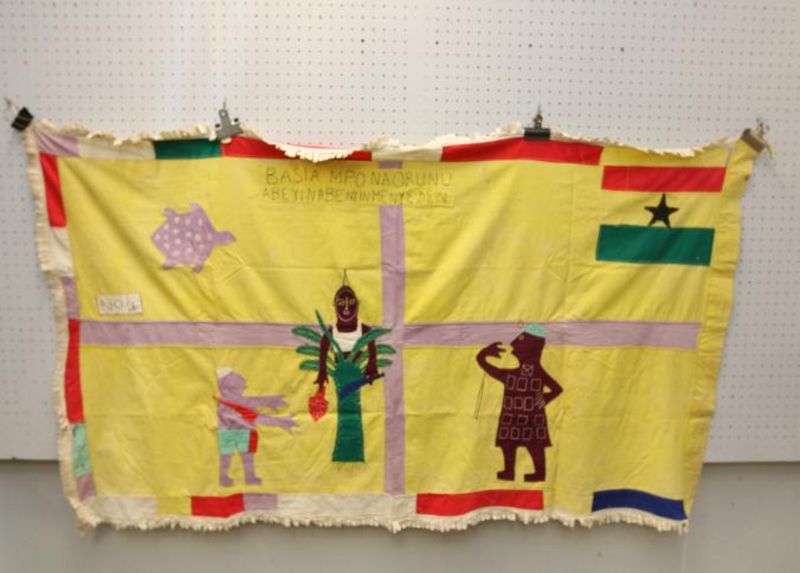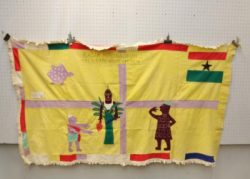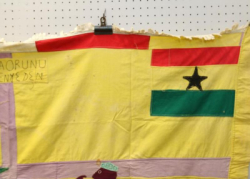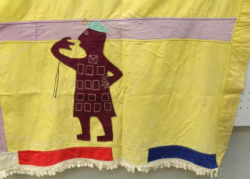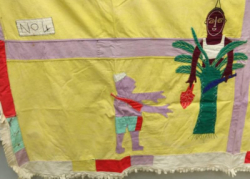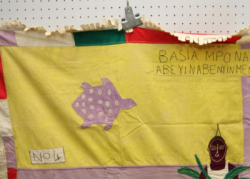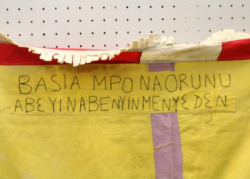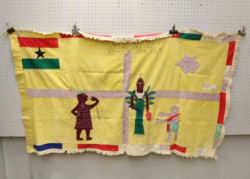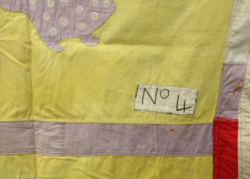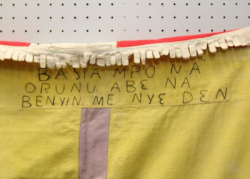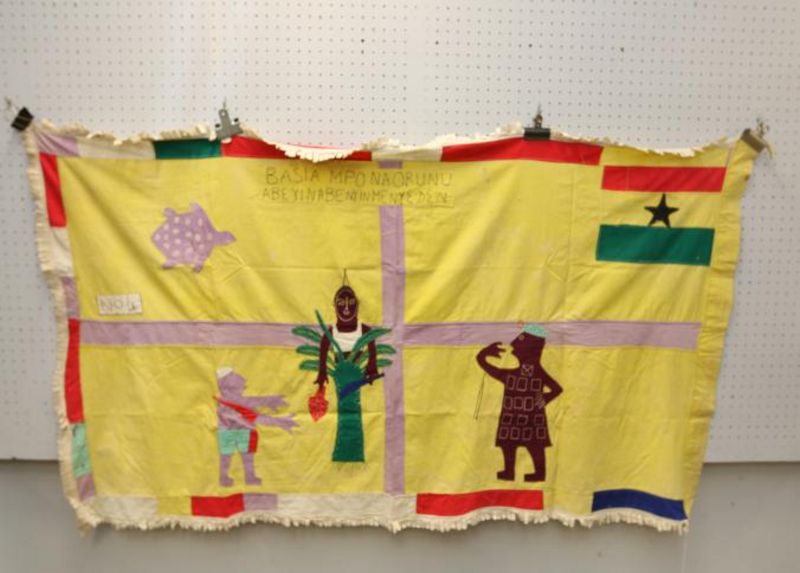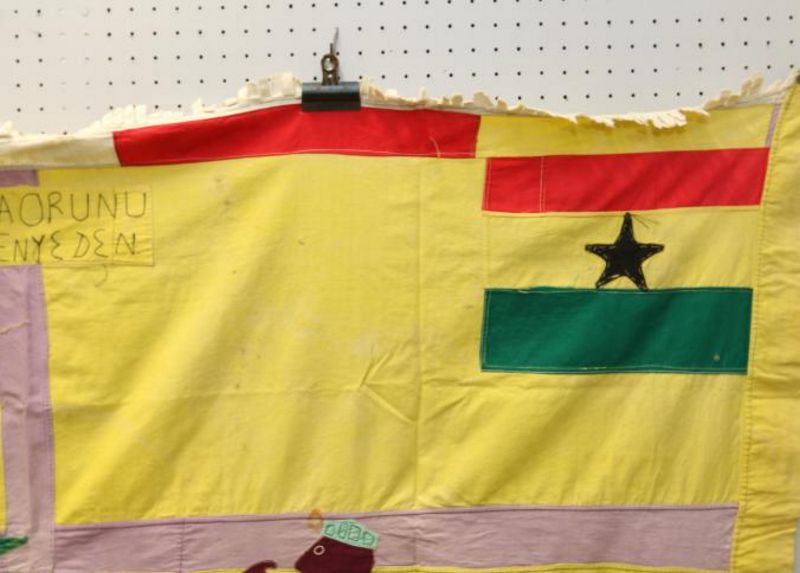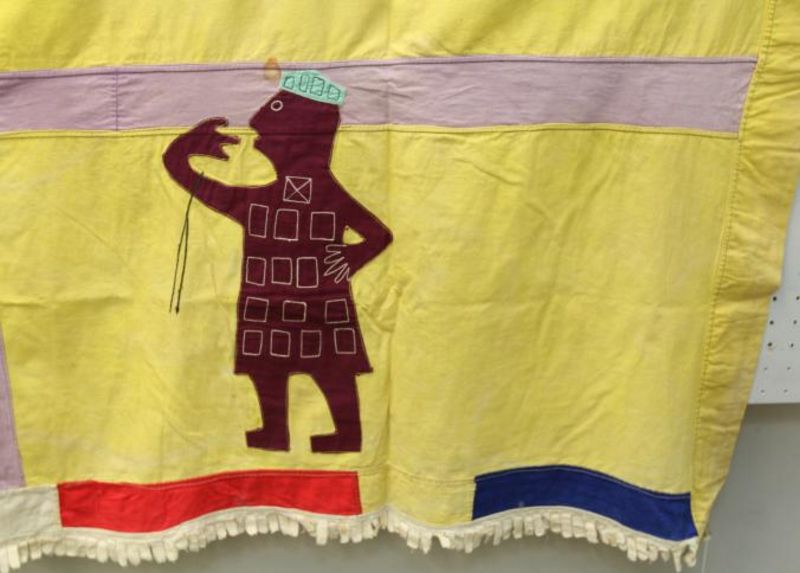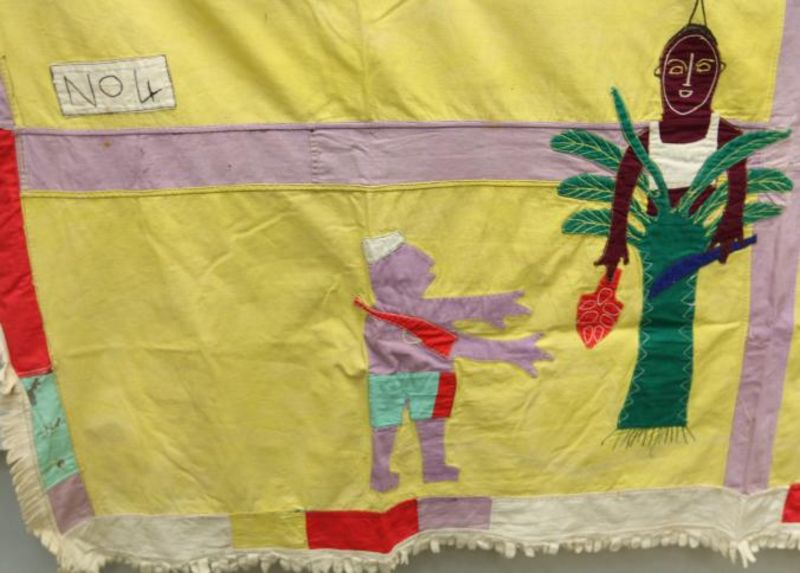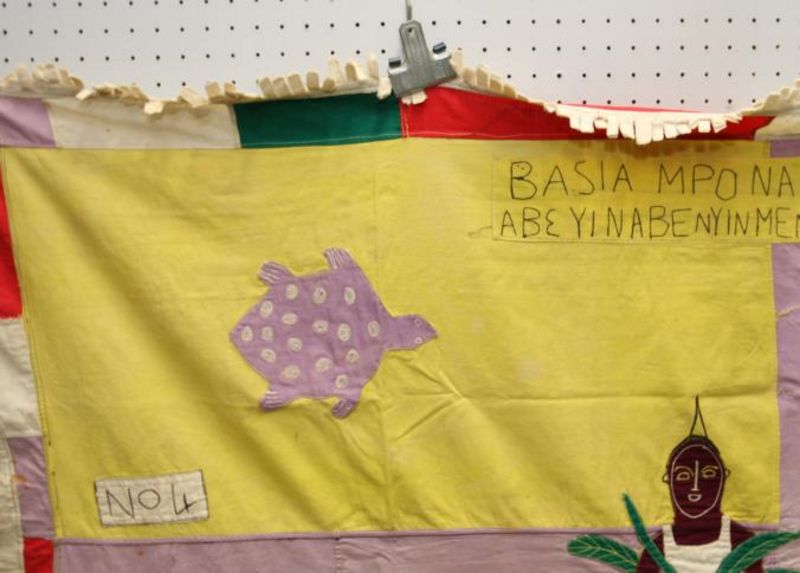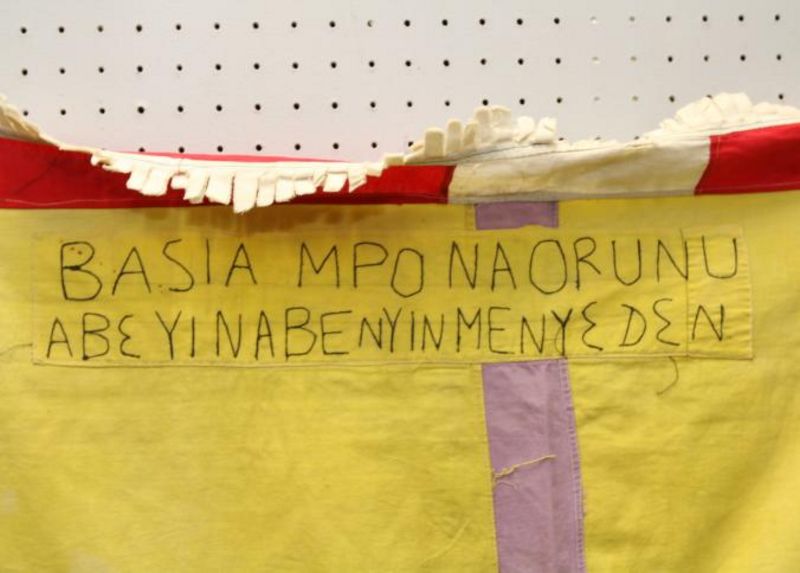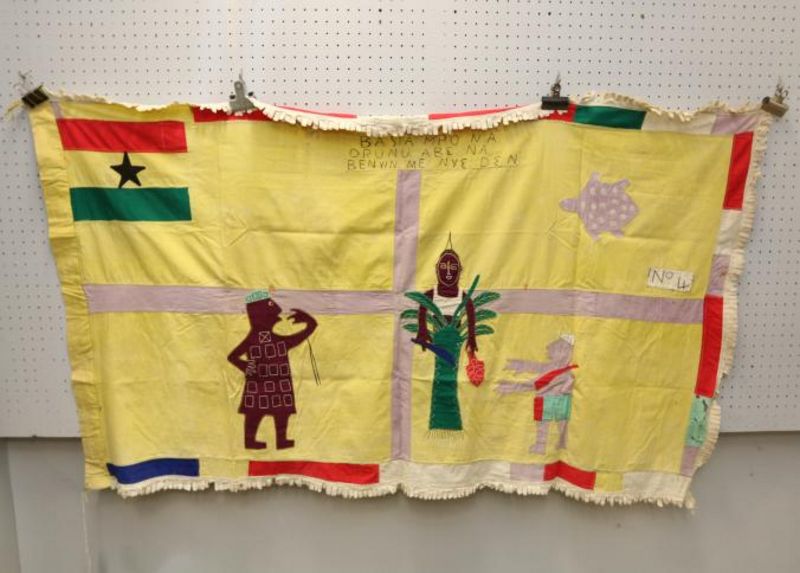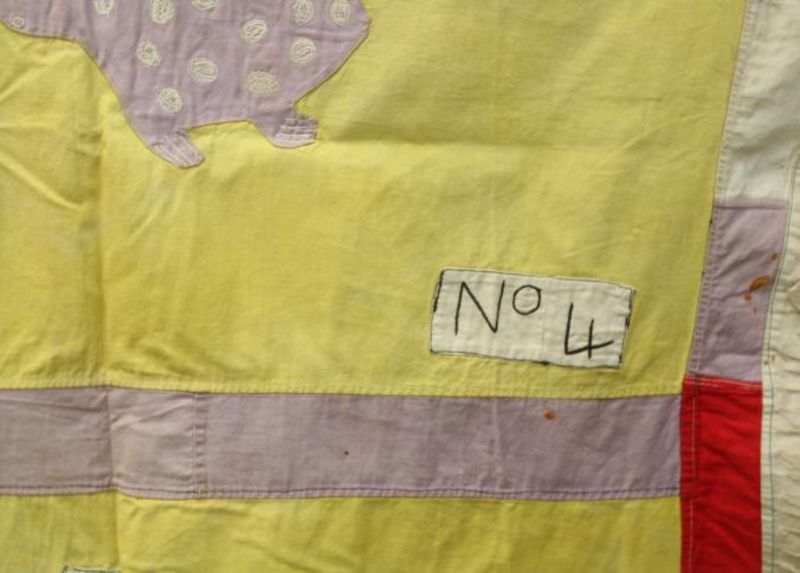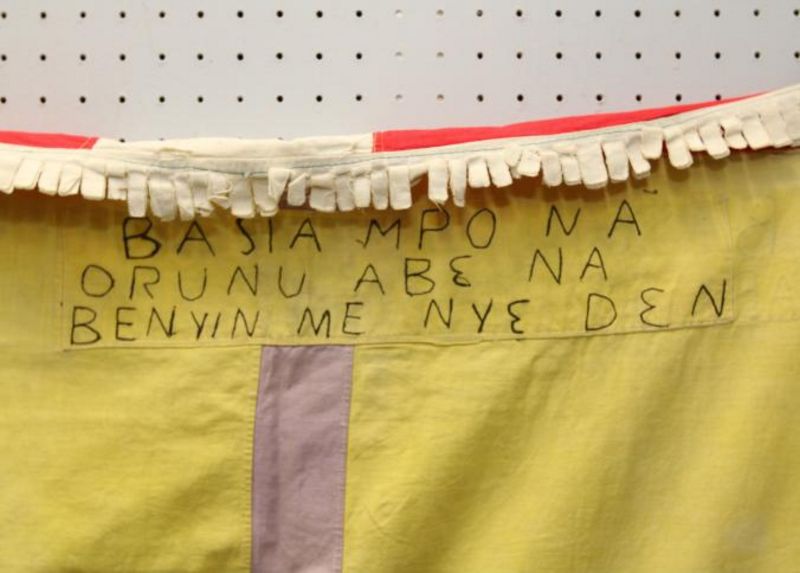Items located in Pleasant Valley, NY. Items include Asafo militia flag - Fante people, Ghana; two slashing knives - Mongo people; man's mourning robe - Ashante people, Ghana; standing Minserah figure; ceremonial chief's necklace - Bamum people, Cameroon' bust of queen - Yoruba people, Benin; wedding blanket - Tuareg people, Niger & Mali; West African bells; old miniature rattle - Chamba people, Cameroon & Nigeria; hexagonal iron sheet currency - Boubi people, Equatorial Guinea and more.
AFRICAN ART COLLECTION OF MARY SUE AND PAUL PETER ROSEN
Mary Sue and Paul Peter Rosen have collected African art for over thirty years, making nine trips to Africa to study the art in its cultural setting. The Rosens have published three African art books, curated more than ten exhibitions from their collection, and have given public lectures about African art and culture. They have donated art from their collection to various institutions including the Newark Museum, Temple University in Philadelphia, the SMA Fathers African Art Museum in Tenafly, New Jersey, and the African American Research Library in Fort Lauderdale, Florida.
Payment is due by Wednesday, November 28 at 1PM.
Pickup in Pleasant Valley, NY must be completed by Wednesday, November 28 at 3PM.
All lots sold as is, where is. There is a 15% Buyers Premium for all lots purchased. Payment methods include cash, MC, Visa, Discover or good check. You can make credit card payment online by going to your Member Area and selecting your invoice.
*NOTE* Shipping is available on all items.
AFRICAN ART COLLECTION OF MARY SUE AND PAUL PETER ROSEN
Mary Sue and Paul Peter Rosen have collected African art for over thirty years, making nine trips to Africa to study the art in its cultural setting. The Rosens have published three African art books, curated more than ten exhibitions from their collection, and have given public lectures about African art and culture. They have donated art from their collection to various institutions including the Newark Museum, Temple University in Philadelphia, the SMA Fathers African Art Museum in Tenafly, New Jersey, and the African American Research Library in Fort Lauderdale, Florida.
Payment is due by Wednesday, November 28 at 1PM.
Pickup in Pleasant Valley, NY must be completed by Wednesday, November 28 at 3PM.
All lots sold as is, where is. There is a 15% Buyers Premium for all lots purchased. Payment methods include cash, MC, Visa, Discover or good check. You can make credit card payment online by going to your Member Area and selecting your invoice.
*NOTE* Shipping is available on all items.
THE FOLLOWING REFERENCES ARE CITED BY AUTHOR NAME AND PUBLICATION DATE IN VARIOUS LOTS:
MS ROSEN/PP ROSEN MASKS FROM WEST AND CENTRAL AFRICA 2013 MS ROSEN/PP ROSEN EMBLEMS OF POWER: ASAFO FLAGS FROM GHANA 2013 (See Lots #7 & 17).
Auction Info
Items located in Pleasant Valley, NY. Items include Asafo militia flag - Fante people, Ghana; two slashing knives - Mongo people; man's mourning robe - Ashante people, Ghana; standing Minserah figure; ceremonial chief's necklace - Bamum people, Cameroon' bust of queen - Yoruba people, Benin; wedding blanket - Tuareg people, Niger & Mali; West African bells; old miniature rattle - Chamba people, Cameroon & Nigeria; hexagonal iron sheet currency - Boubi people, Equatorial Guinea and more.
AFRICAN ART COLLECTION OF MARY SUE AND PAUL PETER ROSEN
Mary Sue and Paul Peter Rosen have collected African art for over thirty years, making nine trips to Africa to study the art in its cultural setting. The Rosens have published three African art books, curated more than ten exhibitions from their collection, and have given public lectures about African art and culture. They have donated art from their collection to various institutions including the Newark Museum, Temple University in Philadelphia, the SMA Fathers African Art Museum in Tenafly, New Jersey, and the African American Research Library in Fort Lauderdale, Florida.
Payment is due by Wednesday, November 28 at 1PM.
Pickup in Pleasant Valley, NY must be completed by Wednesday, November 28 at 3PM.
All lots sold as is, where is. There is a 15% Buyers Premium for all lots purchased. Payment methods include cash, MC, Visa, Discover or good check. You can make credit card payment online by going to your Member Area and selecting your invoice.
*NOTE* Shipping is available on all items.
AFRICAN ART COLLECTION OF MARY SUE AND PAUL PETER ROSEN
Mary Sue and Paul Peter Rosen have collected African art for over thirty years, making nine trips to Africa to study the art in its cultural setting. The Rosens have published three African art books, curated more than ten exhibitions from their collection, and have given public lectures about African art and culture. They have donated art from their collection to various institutions including the Newark Museum, Temple University in Philadelphia, the SMA Fathers African Art Museum in Tenafly, New Jersey, and the African American Research Library in Fort Lauderdale, Florida.
Payment is due by Wednesday, November 28 at 1PM.
Pickup in Pleasant Valley, NY must be completed by Wednesday, November 28 at 3PM.
All lots sold as is, where is. There is a 15% Buyers Premium for all lots purchased. Payment methods include cash, MC, Visa, Discover or good check. You can make credit card payment online by going to your Member Area and selecting your invoice.
*NOTE* Shipping is available on all items.
THE FOLLOWING REFERENCES ARE CITED BY AUTHOR NAME AND PUBLICATION DATE IN VARIOUS LOTS:
MS ROSEN/PP ROSEN MASKS FROM WEST AND CENTRAL AFRICA 2013 MS ROSEN/PP ROSEN EMBLEMS OF POWER: ASAFO FLAGS FROM GHANA 2013 (See Lots #7 & 17).
Categories:
ASAFO MILITIA FLAG. Fante people, Ghana. This flag expresses the proverb, “If a woman is tapping palm wine, then what should a man do?” (Translated from the inscription on the flag). The message is that each person should aspire to be as useful to the No. 4 Asafo Company that owns the flag as the palm tree is to the community. This is a reference to the wine made from the sap of the palm tree and palm nuts that are a source of nutritious oil. The central figure is a woman standing in the top of a palm tree holding a machete in one hand and a bunch of red palm nuts in the other hand. On one side, a warrior with a rifle reaches for the palm fruit and on the other side a Supi or Asafo Captain gestures as if eating the fruit. The images recreate the historical role of women who brought palm nuts to warriors during battle to give them energy. The Company also identifies with the tortoise, carrying its own fortress for protection, which is a symbol of patience and invulnerability. The flag is divided into four quadrants by pink bands that cross next to the palm tree. The canton is the Ghana national flag. The flag dates from about 1960. Entirely hand sewn with appliqued details Cotton textile. 89.5in x 37.5in. Exhibited at the Free Library Gallery Philadelphia 2012, the SMA father Museum of African Art Tenafly NJ 2013, and the University of Memphis Gallery Memphis TN 2016. Published in “Emblems of Power. Asafo Flags from Ghana” p.86 Fig 88. This book is only available from the authors at ppr2001@med.cornell.edu. Collected from Owahene Acheampong in Accra, Ghana in 2005.
More Details
ASAFO MILITIA FLAG. Fante people, Ghana. This flag expresses the proverb, “If a woman is tapping palm wine, then what should a man do?” (Translated from the inscription on the flag). The message is that each person should aspire to be as useful to the No. 4 Asafo Company that owns the flag as the palm tree is to the community. This is a reference to the wine made from the sap of the palm tree and palm nuts that are a source of nutritious oil. The central figure is a woman standing in the top of a palm tree holding a machete in one hand and a bunch of red palm nuts in the other hand. On one side, a warrior with a rifle reaches for the palm fruit and on the other side a Supi or Asafo Captain gestures as if eating the fruit. The images recreate the historical role of women who brought palm nuts to warriors during battle to give them energy. The Company also identifies with the tortoise, carrying its own fortress for protection, which is a symbol of patience and invulnerability. The flag is divided into four quadrants by pink bands that cross next to the palm tree. The canton is the Ghana national flag. The flag dates from about 1960. Entirely hand sewn with appliqued details Cotton textile. 89.5in x 37.5in. Exhibited at the Free Library Gallery Philadelphia 2012, the SMA father Museum of African Art Tenafly NJ 2013, and the University of Memphis Gallery Memphis TN 2016. Published in “Emblems of Power. Asafo Flags from Ghana” p.86 Fig 88. This book is only available from the authors at ppr2001@med.cornell.edu. Collected from Owahene Acheampong in Accra, Ghana in 2005.
High Bid:
$275.00 – kachwa
Auction Type: One Lot
Quantity: 1
Bidding has closed on this lot

